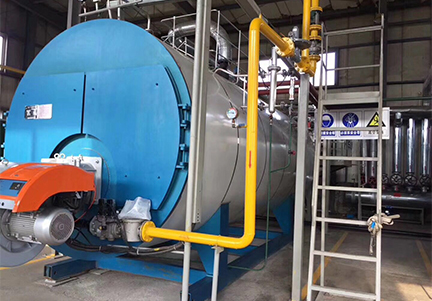buy high temperature steam boiler
High-Temperature Steam Boilers A Comprehensive Guide to Buying
High-temperature steam boilers are essential components in various industries, providing the necessary steam for processes that require elevated temperatures. From power generation to food processing and pharmaceuticals, these boilers play a pivotal role in operational efficiency and productivity. However, the process of purchasing a high-temperature steam boiler can be daunting due to the multitude of options and specifications available. This article will guide you through the essential considerations and steps to take when buying a high-temperature steam boiler.
Understanding High-Temperature Steam Boilers
Before diving into the purchasing process, it's crucial to understand what high-temperature steam boilers are. These boilers are designed to generate steam at temperatures exceeding 450°F (232°C), which is significantly higher than conventional boilers. This capability allows them to meet the demands of various industrial applications, including drying, heating, and sterilization.
Key Considerations When Buying
1. Application Requirements Identify the specific needs of your application. Different industries have varying requirements concerning temperature, pressure, and steam quality. For instance, a pharmaceutical application may require cleaner steam with minimal impurities compared to a more industrial application.
2. Capacity and Output Determine the required steam output capacity in terms of pounds per hour (lb/h) or kilograms per hour (kg/h). The output should align with your operational needs to ensure efficiency and prevent overloading or underutilization of the boiler.
3. Fuel Type High-temperature steam boilers can operate on various fuel types, including natural gas, diesel, biomass, and electricity. Your choice will depend on availability, cost, and environmental regulations. Additionally, consider the boiler's combustion efficiency and emissions standards.
4. Design and Construction The design and materials used in the construction of the boiler influence its durability and performance. Look for boilers made with high-quality materials that can withstand high pressures and temperatures, such as stainless steel or special alloy materials.
5. Efficiency and Energy Consumption Boiler efficiency is a critical factor in operational costs. Ensuring that the boiler has a high efficiency rating will minimize fuel consumption and reduce greenhouse gas emissions. Look for features such as economizers and condensing technology that enhance energy efficiency.
6. Safety Features Safety should be paramount when selecting a high-temperature steam boiler. Evaluate the safety features, including pressure relief valves, automatic shutoff systems, and advanced control mechanisms, to prevent accidents and ensure safe operation.
buy high temperature steam boiler

7. Regulatory Compliance Ensure that the boiler complies with all relevant local, national, and international regulations. This includes ASME (American Society of Mechanical Engineers) standards and any environmental regulations that apply to your industry.
8. Maintenance and Support Consider the ease of maintenance and the availability of service support from the manufacturer. Regular maintenance is crucial for prolonging the boiler's lifespan and ensuring optimal performance, so it's beneficial to choose a provider that offers comprehensive service agreements.
9. Cost and Budget While the initial purchase cost is important, also consider the long-term operational costs, including fuel, maintenance, and repairs. A higher upfront investment might lead to lower operating costs in the long run, so evaluate the total cost of ownership.
Steps to Take When Purchasing
1. Research Suppliers Start by researching potential boiler manufacturers and suppliers. Look for companies with a proven track record and positive customer reviews.
2. Request Proposals Contact multiple suppliers to get detailed proposals. These should include specifications, pricing, delivery timelines, and warranty information.
3. Evaluate Proposals Compare the proposals based on the considerations discussed earlier. Pay close attention to the specific features and benefits offered by each supplier.
4. Conduct Site Visits If possible, visit the facilities of manufacturers to assess their production processes and quality control measures.
5. Make an Informed Decision After thorough evaluation, select the supplier that best meets your needs, offers the best value, and provides strong support and assurance for the future.
Conclusion
Investing in a high-temperature steam boiler is a significant decision that can impact your operational efficiency and cost-effectiveness. By carefully considering your application requirements, evaluating different options, and choosing a reputable supplier, you can ensure that you make a well-informed purchase that will serve your business for years to come. With the right boiler in place, you can enhance your productivity while maintaining safety and compliance with industry standards.
-
Advanced Electric Steam Boiler Manufacturers | GPT-4 Turbo AINewsAug.01,2025
-
Custom Steam Boilers Manufacturer | AI-Enhanced EfficiencyNewsJul.31,2025
-
Top Electric Steam Boiler Makers | AI-OptimizedNewsJul.31,2025
-
Top Electric Steam Boiler Manufacturers - High Efficiency SolutionsNewsJul.30,2025
-
Top Electric Steam Boiler Manufacturers – Efficient Industrial SolutionsNewsJul.29,2025
-
Top Electric Steam Boiler Manufacturers | Reliable Industrial SolutionsNewsJul.29,2025

